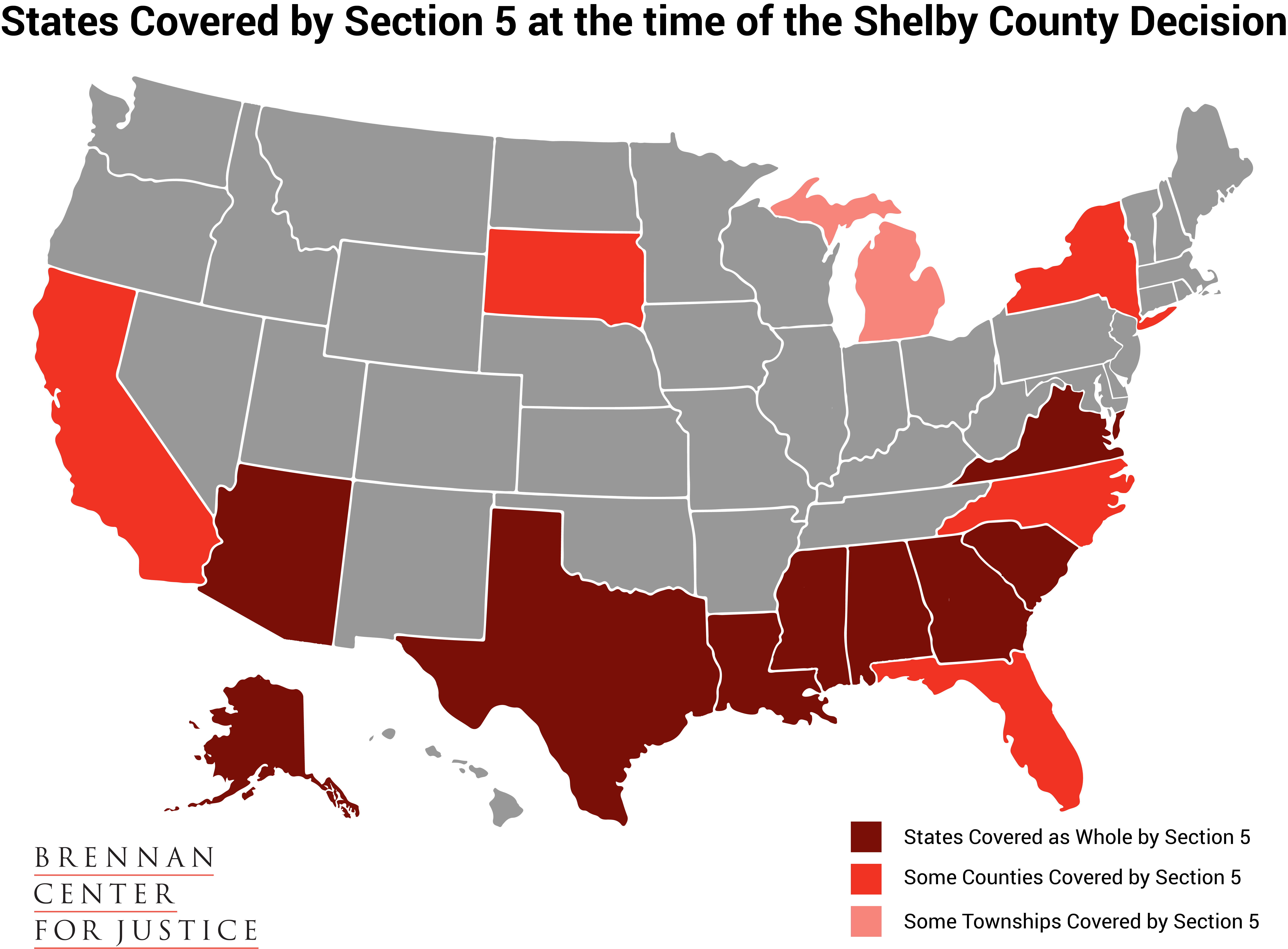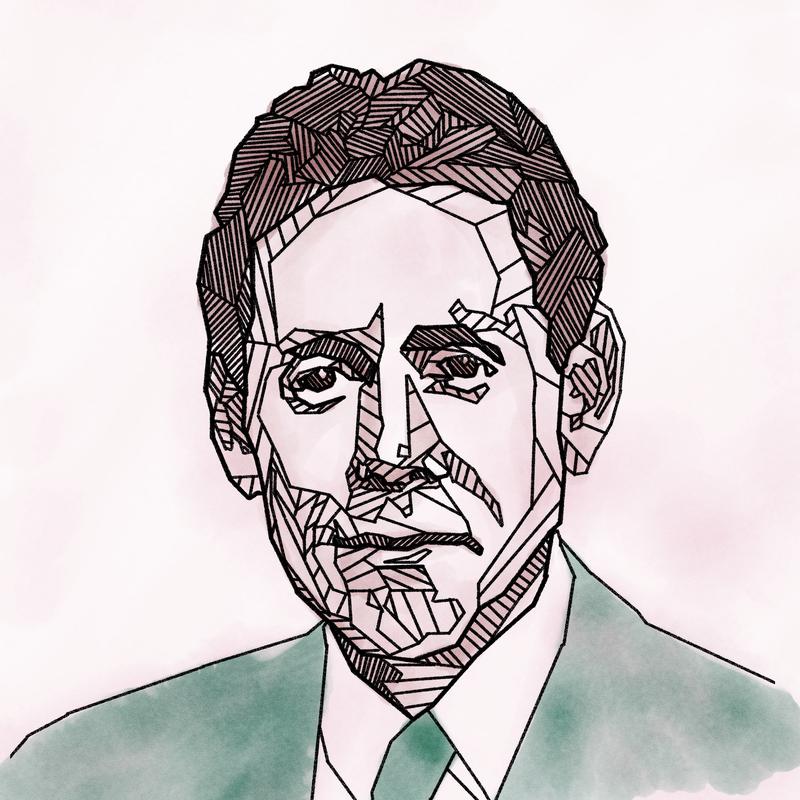John Lewis Voting Rights Advancement Act
The Voting Rights Advancement Act of 2019 was renamed in honor of late congressman John Lewis. The Act specifically seeks to remedy the wave of voter suppression following Shelby v. Holder by reinstating preclearance requirements and adding other voting protections.
-
H.R. 4 Overview from Politico ProPolitico Pro provides the text of the bill, amendments, actions taken on the bill by congress and more.
-
Where (and what) is the John R. Lewis Voting Rights Act?by Zach Montellaro, writing for Politico, March 29, 2021.
-
The John Lewis Voting Rights Act Picks Up Steam.by Ed Kilgore for New York Magazine, April 22, 2021.
-
Q&A with the Brennan Center: How to Restore and Strengthen the Voting Rights Actpublished Jan. 28, 2021.
VRA: section by section
-
Cases raising claims under section 2 of the Voting Rights Actvia the US Department of Justice, this website lists various cases relating to section 2 of the voting rights act and provides brief summaries.
-
About section 5 of the Voting Rights ActA brief overview of section 5 and the effect of Shelby County v. Holder on the section from the US Department of Justice.
A Brief History of the Voting Rights Act and its Challengers
The Voting Rights Act of 1965 (VRA) was passed by Congress in reaction to the Civil Rights Movement. Black leaders had been organizing for decades to turn "one man, one vote" into a practical reality for marginalized Americans. Direct action events like the Selma to Montgomery marches in March of 1965 built momentum and pressured elected officials to pass legislation to actualize the voting rights of Black citizens.
The Voting Rights Act notably targeted barriers placed on Black citizens at the state and local level preventing their vote. For examples of common voter suppression tactics both present and historical, view the Voter Restrictions tab of this research guide. The VRA targeted states with a history of suppressing the voting rights of racial minorities, and provided criteria against which to measure whether or not racial minorities were facing such suppression over time in those regions. The VRA was so successful in enfranchising Black Americans because the legislation required those states to receive federal approval before implementing changes to voter requirements (i.e. preclearance). Voter requirements made at the state level without federal approval could not be used to "den[y] the right to vote for failure to comply with such qualification, prerequisite, standard, practice, or procedure."
The VRA has a history of being renewed and extended over time by various administrations while also facing numerous legal challenges in the Supreme Court. The 2013 case Shelby County v. Holder declared Section 4 of the act unconstitutional. Section 4 contained the "coverage formula" focusing on states with a historic tendency to infringe on the voting rights of Black Americans. Invalidating section 4 of the VRA essentially invalidated section 5, which included the language regarding federal pre-approval of voter requirement changes.
-
Transcript of the Voting Rights Act of 1965from OurDocuments.Gov, a partnership between National Archives and Records Administration, National History Day, and USA Freedom Corps.
Spotlight: Shelby County V. Holder
-
Voting rights case: Made simpleby Lyle Denniston, this post from SCOTUSblog provided an overview of the key issues at stake in Shelby County v. Holder before the case was heard by the Supreme Court.
-
Jurisdictions previously covered by section 5Shelby County struck down section 4 of the VRA, which included the formula for determining which states must have strict oversight of their proposed voting changes. The US Justice Department provides various tables listing the geographic areas formerly covered under section 5 of the VRA. Below one such table is excerpted.
-
The Supreme Court made the GOP’s new voting restrictions possibleby Ian Millhiser for Vox, 2021.
-
Constitutional Challenges Loom Over Proposed Voting Billby Adam Liptak for the New York Times, 2021.
-
How the U.S. Voting Rights Act was won—and why it’s under fire todayby Erin Blakemore, for National Geographic, 2020.
-
How Shelby County v. Holder upended voting rights in Americawritten by P.R. Lockhart for Vox in 2016.
-
Between the Lines of the Voting Rights Act OpinionJohn Schwartz writing for the New York Times, 2013.
-
Tempering Society's Looking Glass: Correcting Misconceptions about the Voting Rights Act of 1965 and Securing American DemocracyCitation: Orville Vernon Burton, Tempering Society's Looking Glass: Correcting Misconceptions about the Voting Rights Act of 1965 and Securing American Democracy, 76 LA. L. REV. 1 (2015).
-
The South after Shelby CountyCitation: Nicholas O. Stephanopoulos, The South after Shelby County, 2013 SUP. CT. REV. 55 (2013).
-
Shelby County and Local Governments: A Case Study of Local Texas Governments Diluting Minority VotesCitation: Sydnee Fielkow, Shelby County and Local Governments: A Case Study of Local Texas Governments Diluting Minority Votes, 14 NW. J. L. & Soc. POL'y 348 (2019).
-
Shelby County v. Holder: Out with the Old & in with the New, Time for a New FormulaCitation: Anissa Paredes, Shelby County v. Holder: Out with the Old & in with the New, Time for a New Formula, 44 OKLA. CITY U. L. REV. 183 (2019).
Edward Blum founded the 501(c)3 public charity, Project on Fair Representation. This conservative legal "defense fund" encourages cases challenging progressive rulings and legislation.
Selected articles:
Listen: President Johnson's Speech as he signs the Voting Rights Act
 "Recorded in Capitol Rotunda, this speech was given by President Lyndon B. Johnson before signing the Voting Rights Act of 1965. He discusses the significance of the bill and plans to enforce the act. Audio courtesy of the NYC Municipal Archives WNYC Collection."
"Recorded in Capitol Rotunda, this speech was given by President Lyndon B. Johnson before signing the Voting Rights Act of 1965. He discusses the significance of the bill and plans to enforce the act. Audio courtesy of the NYC Municipal Archives WNYC Collection."
Books
-
Ballot Blocked by
Call Number: JK1846 .R46 2017ISBN: 9780804797597Publication Date: 2017-09-12"Ballot Blocked shows how the divergent trajectories of legislation, administration, and judicial interpretation in voting rights policymaking derive largely from efforts by conservative politicians to narrow the scope of federal enforcement while at the same time preserving their public reputations as supporters of racial equality and minority voting rights." -
The Rise and Fall of the Voting Rights ACT by
Call Number: KF4891 .B85 2016ISBN: 9780806152004Publication Date: 2016-04-12A detailed and timely history, The Rise and Fall of the Voting Rights Act analyzes changing legislation and the future of voting rights in the United States.


